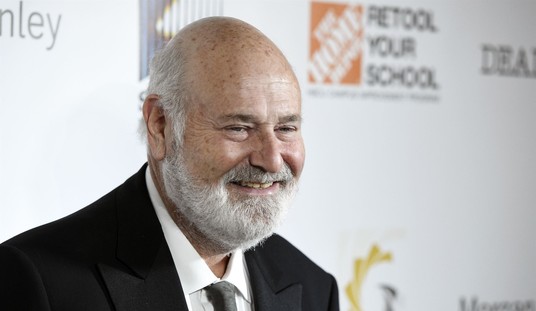Or at least that’s the way it used to be. Ed Driscoll has a great post on just that, which includes a little something from Frederica Mathewes-Green that hit me like a big, heavy brick-like thing:
I’m a fan of old movies, the black-and-whites from the 1930s and 1940s, in part because of what they reveal about how American culture has changed. The adults in these films carry themselves differently. They don’t walk and speak the way we do. It’s often hard to figure out how old the characters are supposed to be—as though they were portraying a phase of the human life-cycle that we don’t have any more.Take the 1934 film Imitation of Life. Here Claudette Colbert portrays a young widow who builds a successful business. (Selling pancakes, actually. Well, it’s more believable if you see the whole movie.) She’s poised and elegant, with the lustrous voice and magnificent cheekbones that made her a star. But how old is she supposed to be? In terms of the story, she can’t be much more than thirty, but she moves like a queen. Today even people much older don’t have that kind of presence—and Colbert was thirty-one when the movie came out.
How about Clark Gable and Jean Harlow, smoldering away in Red Dust? They projected the kind of sexiness that used to be called “knowing,” a quality that suggested experienced confidence. When the film came out Gable was thirty-one and Harlow ten years younger. Or picture the leads of The Philadelphia Story. When it was released in 1940, Katharine Hepburn was thirty-three, Cary Grant thirty-six, and Jimmy Stewart thirty-two. Yet don’t they all look more grownup than actors do nowadays?
I wondered this myself, but had thought the solution was something more superficial. I grew up on old movies, too, and so of course everybody looked ten days older than God to me. Anybody over the age of 15 could drive a car and was positively ancient. Today, I thought, they still carried that aura of grown-up-ed-ness I’d assigned to them while watching Channel 11 as a kid. And if today’s stars look like spoiled children, maybe it’s because half of them are about half my age.
And maybe all that is a part of it. But it’s not the whole story, is it?
The culture is now in a permanent state of adolescence — or even pre-pubescence — and nowhere is that better crystalized than in today’s celebrities. For the very most part, they’re no longer glamorous, grown up stars for us to emulate. More likely, they’re stumbling train wrecks, famous for being famous.
Octo-Mom has litters of children, makes porn. What would Cary Grant make of that? Let’s go to the man himself, who said, “It’s important to know where you’ve come from so that you can know where you’re going. I probably chose my profession because I was seeking approval, adulation, admiration and affection.”
Approval. Adulation. Admiration. Affection. There’s more to life, of course, but all of those things require respect from your fans. They have to be earned.
It’s much cheaper — and much easier — just to be gawked at. So it’s probably no coincidence that one of the most popular celebrity sites is called “Gawker.”
It’s about all we have left.










Join the conversation as a VIP Member